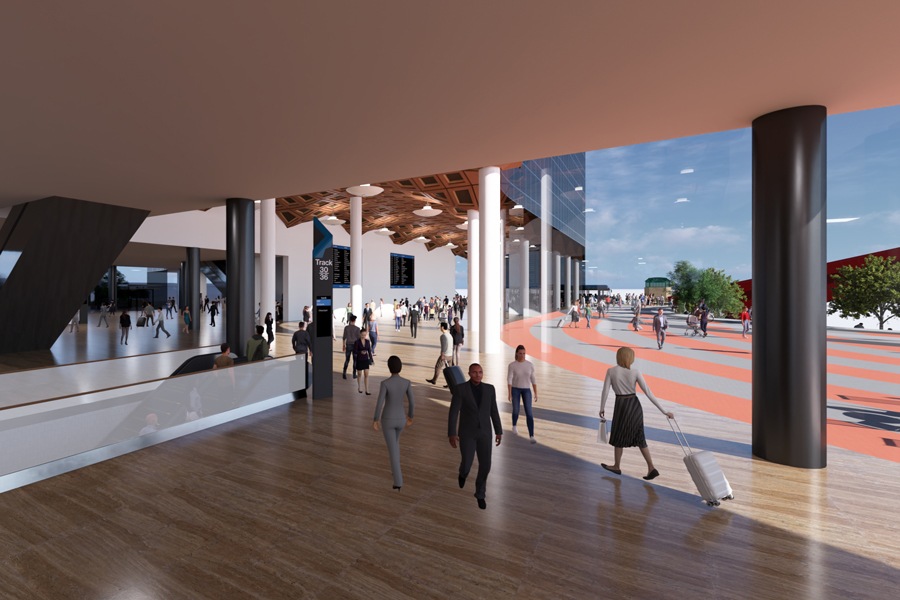
Amtrak’s Plans for Access to a Large, Repurposed Mail Platform are on the Wrong Track
It is urgent for the City and State to get involved now to ensure that a Van Buren Street entrance is included in Phase 1 of Amtrak’s plans.
There is a huge opportunity to grow capacity at Chicago Union Station (CUS). A gigantic former mail platform that runs from Jackson Street almost all the way to Polk Street presents massive potential to serve more trains and more travelers.
Getting people to the platform is the catch. Amtrak is already moving forward with a plan. But their scheme will create a terrible customer experience and cripple the station’s ability to expand.
Properly designed, the former mail platform and a convenient portal to it at Van Buren Street can become a busy station in its own right—the “Annex”—greatly amplifying Union Station’s capacity to host more trains and serve more people.
Why it Matters So Much
Chicago Union Station is already the fifth-busiest Amtrak train station in North America. But it could be much, much busier.
The Federal Railroad Administration recently accepted 16 Midwest corridors into its Corridor Identification and Development Program. Cities and states are planning expansions that could bring up to 10 times more trains to Union Station in the coming years.
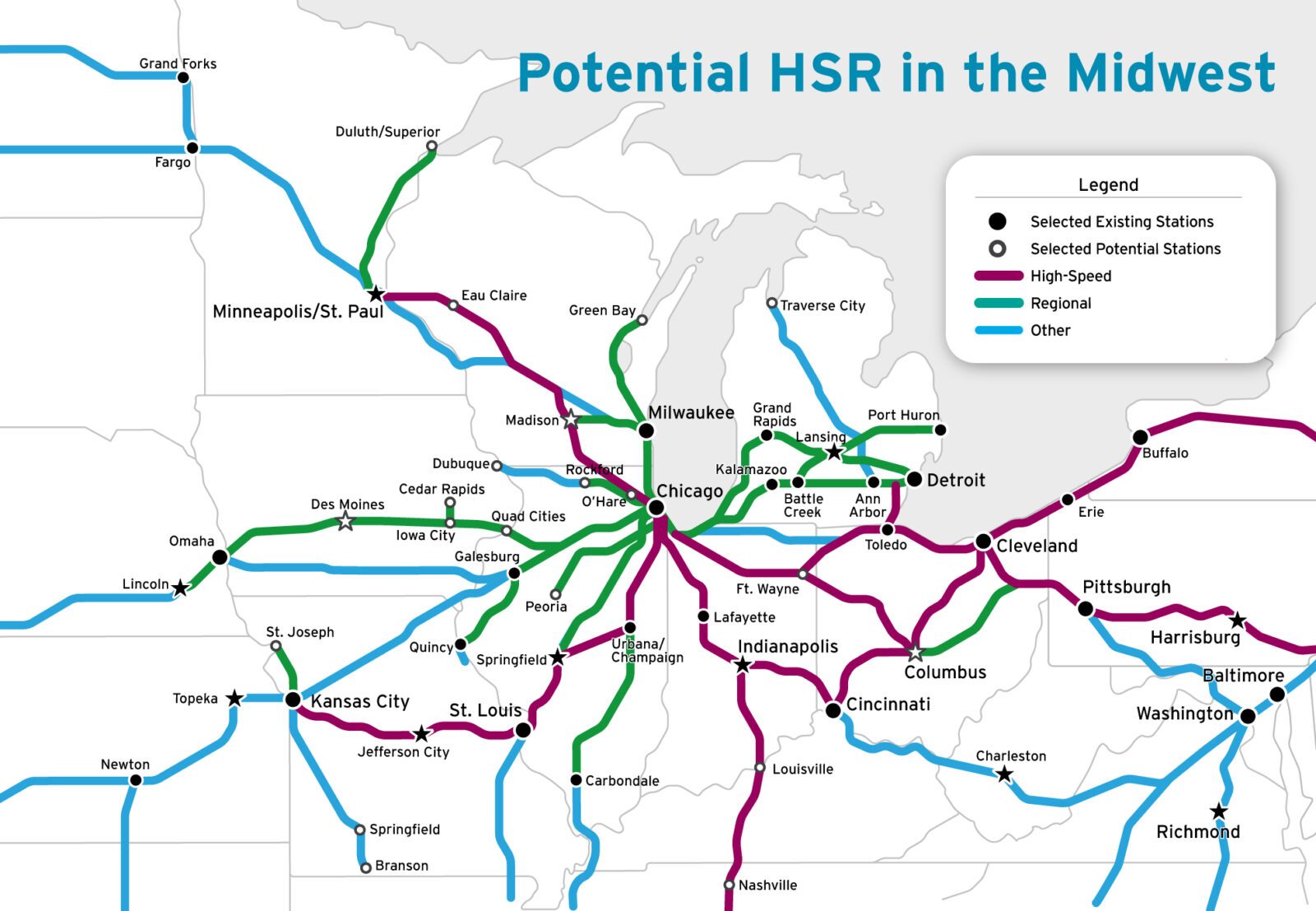
There are at least 16 high-speed or regional rail corridors that depend upon expanding station capacity in Chicago.
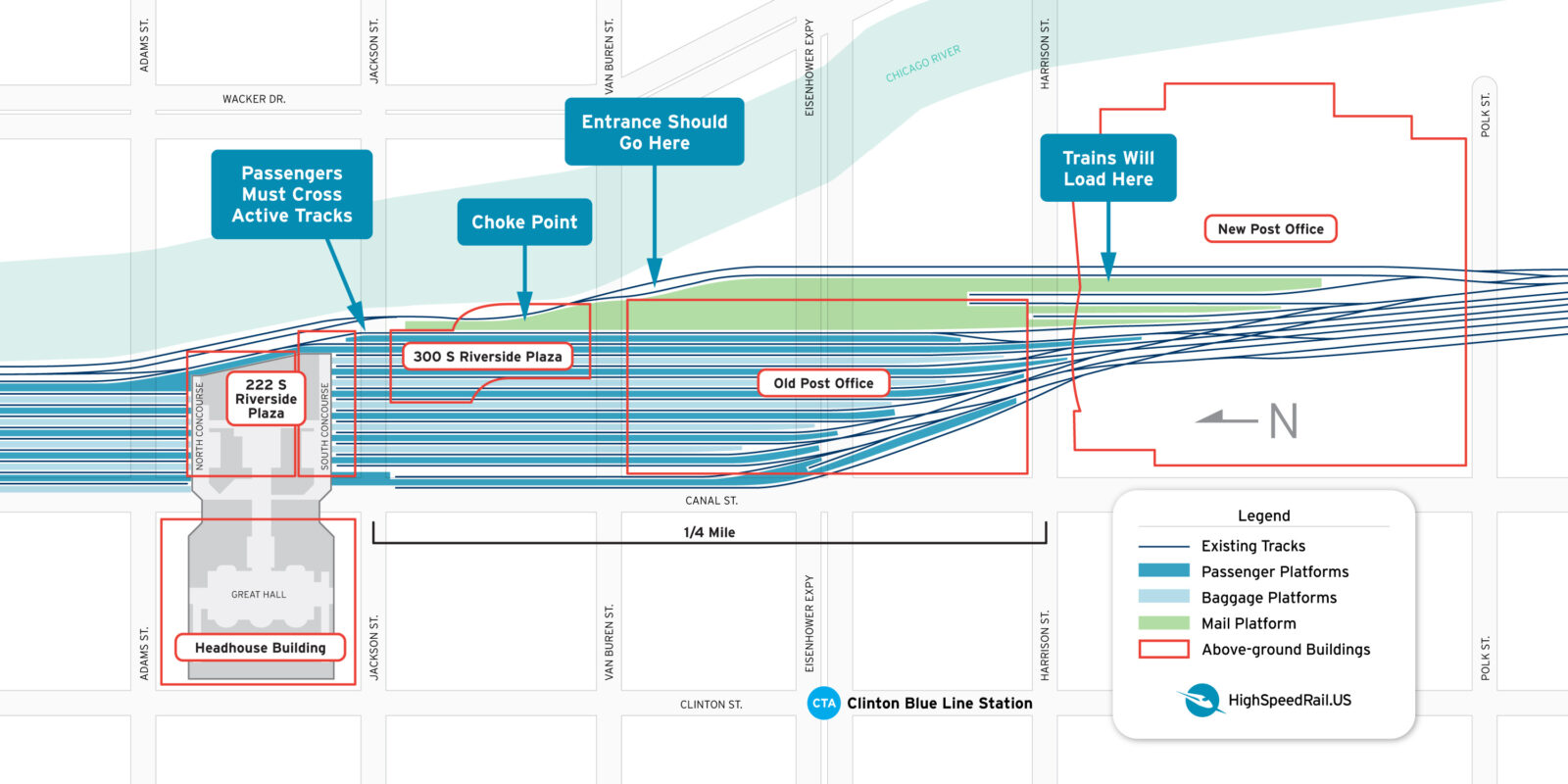
Addressing the Future: Mail Platform Reimagined
Sitting between two through tracks that skirt the eastern edge of the CUS Concourse, the former mail platform will maximize capacity with minimal intervention.
It will create through-routing without a costly tunnel—unlike Crossrail in London, RER in Paris, and S-Bahn in German cities. And the platform is ginormous. Over 1,500 feet long and 50 feet wide in the middle. Six trains could load and unload simultaneously. And, because it sits four feet above the rail, it will offer level boarding. So getting on and off the train will be easier than at the other CUS platforms.
Another benefit: Amtrak needs new platform space to accommodate work on Union Station’s south platforms. The Annex will meet that need. For these reasons and more, Amtrak is moving ahead on renovating the platform for passenger use.

Ignoring the Customer
Unfortunately, Amtrak’s plan for accessing the platform ignores the user experience.
The plan will discourage ridership and subvert the platform’s potential by creating a long, awkward journey to waiting trains.
Passengers will be escorted from the south concourse and across two active tracks, then funneled up a narrow set of stairs. From there, they’ll walk more than two city blocks.
The choke point at the stairs will cause delays. Even worse, the platform is closest to the Chicago River at that point. So passengers will be exposed to wind, rain, and snow—and forced to drag their luggage up slick, dangerous steps. Misery.
This convoluted route will add at least 15 minutes to travel times. It’s a ridiculous burden, especially for passengers on short-distance trips.
To attract riders rather than drive them away, we need a solution with a serious focus on customer experience.

A Better Idea: Direct Access at Van Buren Street
The sweet spot of the platform—where passengers would alight and detrain—is south of Van Buren Street. That’s where it is widest and all the action will happen. It needs a direct entrance to the platform from the street above.
The Old Post Office is the obvious solution. The north end of this building is at Van Buren Street—a block south of Union Station. Vertical access can be opened directly to the platform below.
The Annex entrance could be located in the food court of the Old Post Office or the adjoining plaza. From there, waiting trains would be just a few steps and an escalator ride away.
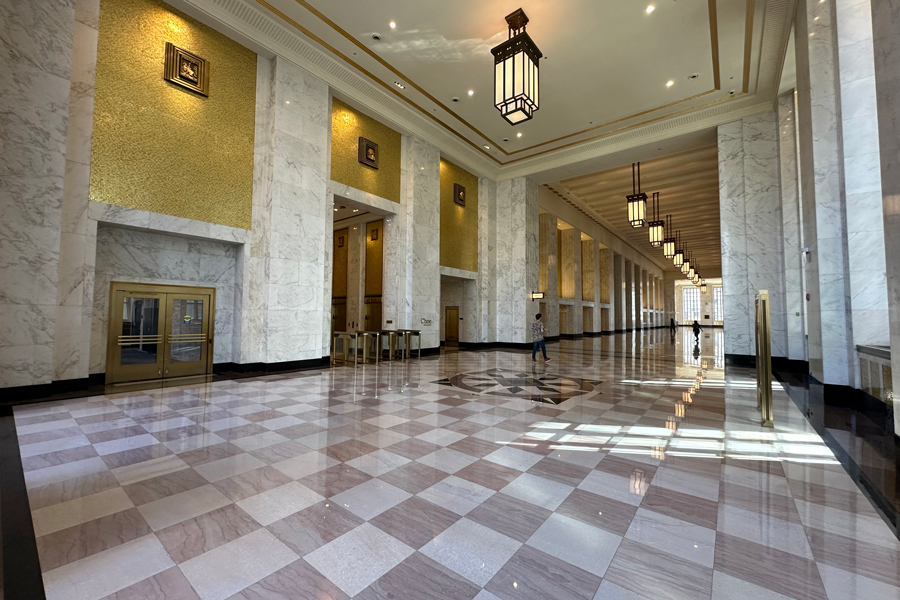
Clearing the Hurdles to a First-Class Entrance
Every bold idea faces pushback. Amtrak’s concerns about activating the Mail Platform stem from a limited vision—not insurmountable problems. Here’s how we turn each obstacle into a pathway forward.
Additional staff
Amtrak is concerned about staffing needs. Using the mail platform will require additional staff, with or without a new entrance. Perhaps, but the value far outweighs the cost. A Van Buren entrance improves access, flow, and service. Strategic staffing is a small price for a major upgrade.
Gaining easements from building owners
Amtrak says property owners are hesitant to accommodate emergency exits or public access. That’s why public leadership matters. With City and State engagement, design can meet safety needs and bring foot traffic that benefits the building.
Lack of funding
The current grant does not include funding for an entrance, because Amtrak didn’t envision one during the design process. The lack of funding is not a dead end—it’s a symptom of under-ambition. Now that the opportunity has come into focus, the solution is straightforward: The City and State must work with FRA to amend the grant. Great projects evolve—this one must.
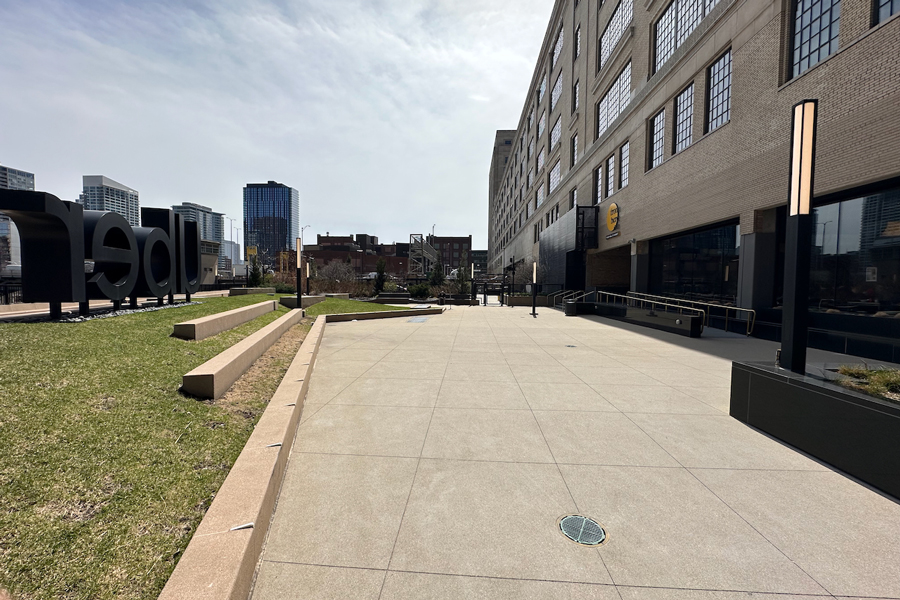
The plaza next to the new platform may be a way to create a direct entrance. It should be the minimum acceptable solution.
Delivering Immense Impact
The impact of the Annex would be staggering:
- Create capacity for six trains to load simultaneously.
- Facilitate “through-running” and make possible trips like Springfield to O’Hare and Detroit to Milwaukee.
- Allow level boarding for single-level trains.
- Move a significant portion of passenger traffic out of the overcrowded Concourse.
- Provide temporary platform space during the BNSF platform renovation.
Of course, this solution will require close cooperation with the current ownership of the Old Post Office. Its historic lobby has undergone a beautiful restoration—a sibling to Union Station’s Great Hall.
And, as with the entire CUS project, strong and resourceful political support will be required to see it through.
A Platform for Chicago’s Future
The City of Chicago and State of Illinois must act now.
Amtrak is moving forward with a plan that does not driven by a vision. We are in this position because Illinois does not have a long-range, integrated rail plan. Nor does it have a funding stream to implement such a plan.
Help us build support for an Illinois Integrated Network Plan so that we can make the most of every opportunity.
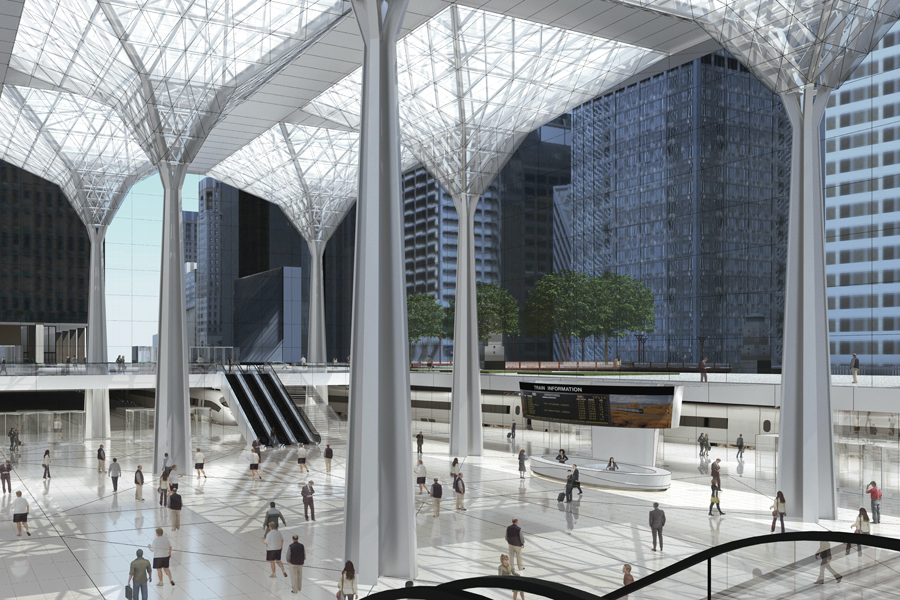
Join the Movement
Let’s build a monument in transportation at Union Station. Thousands of people are on board. Join us and make it a reality.
